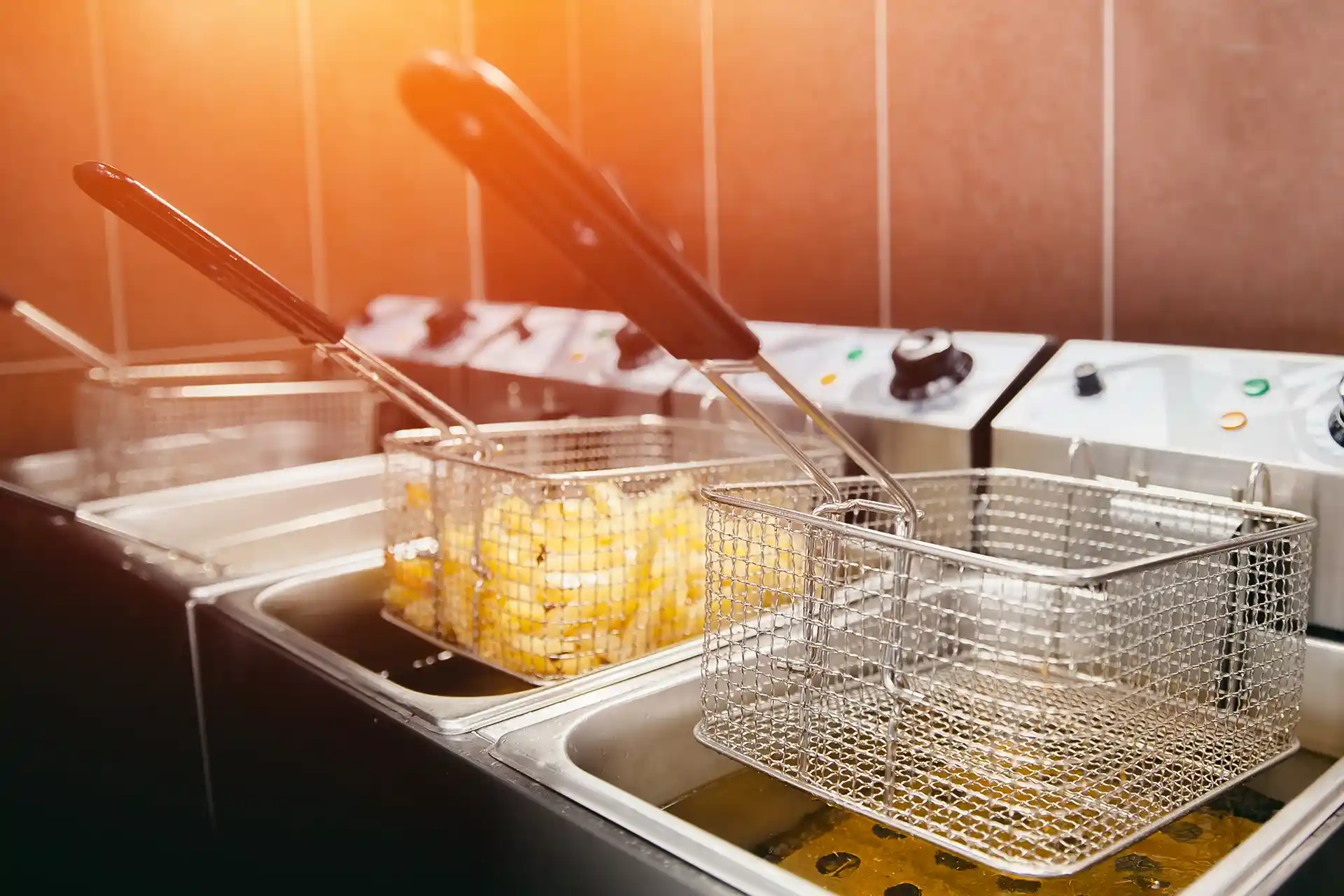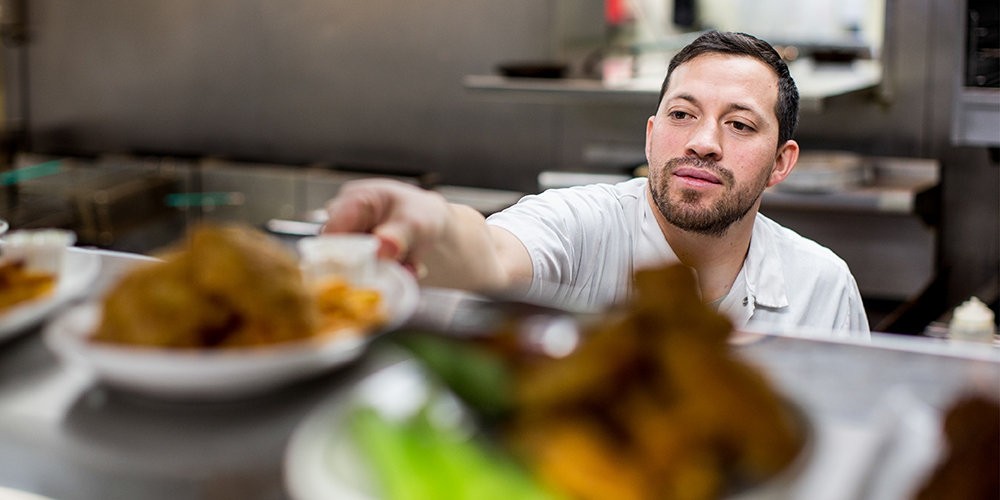By Jason Cocco, Senior Vice President of Sales, Restaurant Technologies
This article originally appeared on Hospitality Technology December 6th, 2018.
https://hospitalitytech.com/flash-pan-how-reduce-risk-food-service-kitchen-fires
 The National Fire Protection Association (NFPA) reveals that roughly 8,000 foodservice businesses report an incident of fire each year, resulting in a total estimated damage cost of more than $246 million averaging $30,750 per foodservice fire.
The National Fire Protection Association (NFPA) reveals that roughly 8,000 foodservice businesses report an incident of fire each year, resulting in a total estimated damage cost of more than $246 million averaging $30,750 per foodservice fire.
By focusing on prevention, identifying your business’s key risk areas, and taking steps to mitigate that risk, you can help prevent your business from becoming a part of this alarming statistic, or at the very least help prevent hefty fines when the fire inspector comes. The time to start implementing a fire prevention strategy is now because by the time you smell smoke, it’s already too late.
What follows is a brief recap of the findings of Restaurant Technologies’ full report on this topic.
Identifying Areas Where the Potential for a Fire is Greatest
The risk of fire ignition is often tied to one of four central risk areas: cooking equipment, electrical connections and malfunctions, exhaust systems or employee error. Let’s look at each area more closely.
Risk 1: Combustion Involving Cooking Equipment
A busy cook’s line could have 10-20 flame sources operating simultaneously, so it’s not surprising that cooking equipment is cited as the leading cause of fires in foodservice businesses. The NFPA estimates that 61 percent of all facility fires, and 38 percent of the related damage caused, can be tied to cooking equipment.
Perhaps more surprising is that almost 43 percent of these fires began when the cooking material itself — commonly oil or a food product — ignited
Risk 2: Electrical Considerations
A common culprit in home fires, electrical complications are also the second most common cause of fire in foodservice businesses. These fires are often sparked by combustible items (think oil, paper products and even flour, which is one of the most combustible items found in most kitchens) left near power sources or from frayed cords, oil-laden connections or a simple system failure or malfunction.
Electrical fires account for about 9 percent of all foodservice business fires and 21 percent of the direct property damage.
Risk 3: Unresolved Exhaust Complications
Cleanup and removal of greasy buildup from the cook surface and hood system may feel like a mundane daily responsibility, but when these tasks are ignored or done poorly, the remaining residue can be a substantial fire risk. Even with a fire suppression system, if the flame reaches the grease build-up, the fire will exponentially grow and could result in a total loss for your restaurant.
NFPA regulations require any foodservice business where cooking takes place to have its hoods cleaned on a regular schedule — depending on hours of operation and volume of business. The results of a failure to do so are too drastic to ignore.
Risk 4: Honest Mistakes and Employee Neglect
Sometimes accidents happen and sometimes those accidents can lead to a costly fire. Human error — whether errantly misplacing a hazardous material or simply not following safe restaurant protocol such as cleaning spaces associated with fire risk areas — causes 22 percent of all facility fires, according to the NFPA. Proper training and automated support can reduce this risk, but ultimately it’s crucial that employees make smart decisions and follow through on expectations.
Preventing Oil Fires in Your Business
We know that fire can originate from a number of sources, but do your employees? For managers, this means a fire prevention strategy must be comprehensive and focus on proper maintenance of the facility and training for staff. Your staff should be well-versed in each of the following fire prevention safety techniques.
- Cleaning up grease. The hoods are paramount but staff should also look for grease on walls and kitchen equipment. This also includes avoiding throwing water on a grease fire. The problem will only get infinitely worse.
- Handling and disposing of ashes. Charcoal or wood ovens should be cleaned daily and ashes placed in metal containers. Cigarettes and ashtrays should be rinsed before being thrown away.
- Ensuring solutions are properly stored. From flammable liquids to cleaning chemicals, staff should know where to store such liquids and proper cleanup protocol should an accident occur.
- Avoiding fire hazards. Whether it’s properly storing paper products or disposing of trash, soiled rags and cardboard in an effective manner, staff should understand and perform the daily maintenance tasks that reduce your fire risk.
- Tailor your maintenance plan to your business. Ensure your plan meets all mandatory standards outlined by vendors, insurers, regulatory bodies and the local fire marshal, who’s also a great resource for updates on code changes and other regulatory matters. From there, you can customize the plan to match your location’s specific needs and risk areas.
- Install or update your fire-suppression system. Because a majority of kitchen fires start with cooking equipment, it is crucial your business has a fire-suppression system to dispense the chemicals necessary to extinguish it. If your business already has such a system, ensure it is regularly and professionally inspected so it’s operating at peak efficiency. If your business does not, it should be at the top of your priority list.
- Ensure the right portable extinguishers are accessible and ready. Kitchen fires require Class K extinguishers, which are the only extinguishers created to address fires from cooking oils and greases such as animal and vegetable fats. However, traditional Class ABC extinguishers may have a suitable place in other locations of your business such as the dining room or employee break room. Ensure the right extinguishers are in the right place, at the right time and that they have been inspected recently.
- Schedule regular electrical maintenance. Many electrical fires are the product of faulty wiring — so prevent these incidents with regular maintenance. Stick to this schedule and contact a professional if you notice frayed cords or wiring.
- Clean hood baffle filters. Grease-laden smoke allowed to collect on your kitchen’s hood system poses a fire threat. To reduce this threat the filters should be cleaned by putting them in the dishwasher or pressure washing them with a degreasing solution.
- Set up professional inspections for your exhaust system. Even with the most dedicated cleaning regimens, grease can still accumulate in the exhaust system. One easy way to avoid the hassle and concern of scheduling regular inspections (and ensuring they meet your standards) is to streamline your hood cleanup with AutoMist, which automates the entire hood, flue and fan cleaning process and includes regularly scheduled inspections.
- Review the inspection report carefully. Request pictures to confirm the cleaning providers’ efforts are meeting expectations.
- Identify the right vendor for all maintenance and inspection. The lowest price is not always the best option. Look for a certified, trusted expert in the field and one with clear lines of communication for additional assistance.



